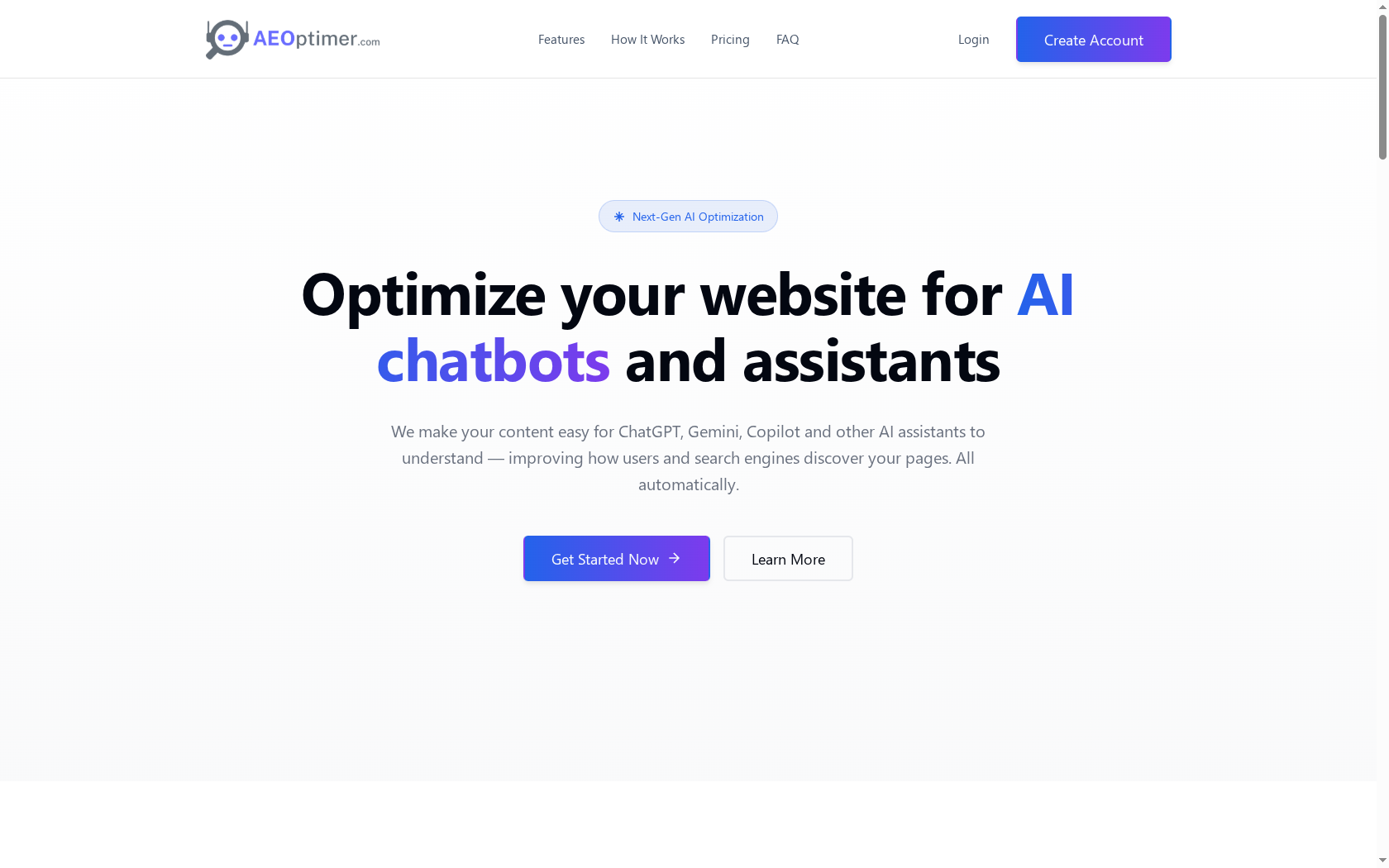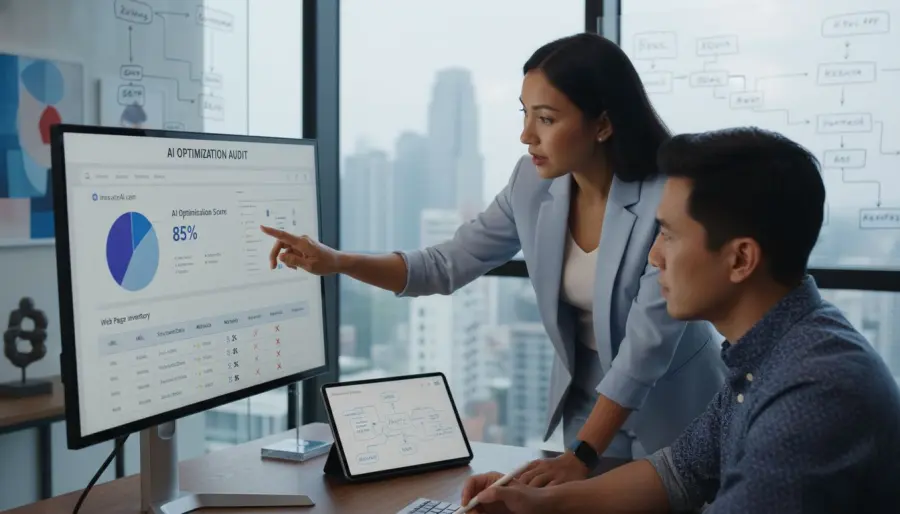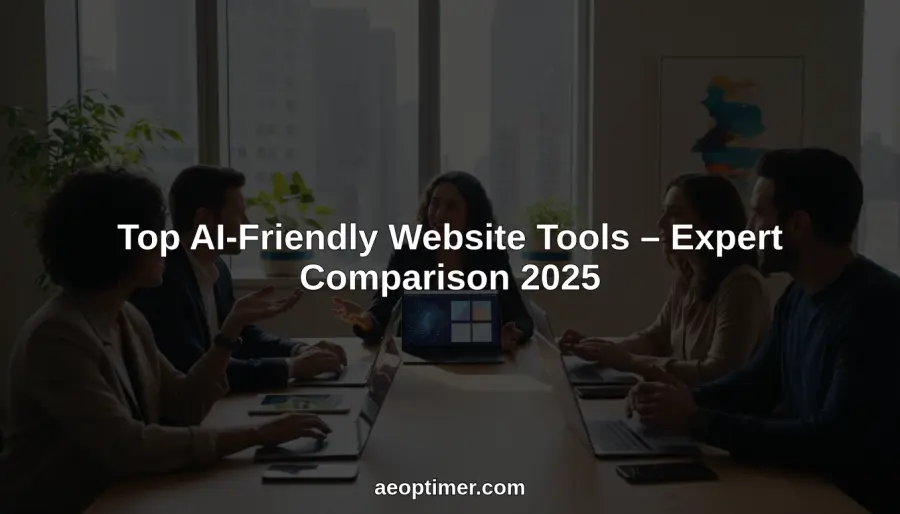What Is Page Optimization? Complete Guide to Success

Did you know that nearly 93 percent of online experiences begin with a search engine? For anyone with a website, showing up in those results is a huge deal. Page optimization shapes the difference between being seen and being lost in digital noise. By fine-tuning your web pages, you open doors to better visibility, stronger engagement, and a smoother experience for real people and search engines alike.
Table of Contents
- Defining Page Optimization And Its Purpose
- Key Types Of Page Optimization Techniques
- How Automated Page Optimization Works
- Benefits For Search And Ai Discoverability
- Common Pitfalls And How To Avoid Them
Key Takeaways
| Point | Details |
|---|---|
| Page Optimization Importance | Essential for enhancing search engine rankings and attracting organic traffic; involves improving webpage elements for better performance. |
| Techniques Overview | Key strategies include content optimization, technical SEO, and mobile-first design, all aimed at improving user experience and site visibility. |
| Automated Optimization | Utilizes machine learning to dynamically update web content and layouts for enhanced user engagement and improved search performance. |
| Common Pitfalls | Avoid issues like keyword stuffing and neglecting mobile responsiveness; a holistic approach to optimization ensures ongoing improvement and relevance. |
Defining Page Optimization and Its Purpose
Page optimization is the strategic process of refining individual web pages to enhance their performance in search engine rankings and attract more organic traffic. According to research from Fiveable Marketing Resources, this practice involves systematically improving multiple elements of a webpage to increase its relevance and discoverability.
The core purpose of page optimization extends beyond simple keyword placement. It encompasses a holistic approach to making web content more accessible, engaging, and valuable to both search engines and human readers. Key optimization strategies include:
- Enhancing HTML source code
- Optimizing textual content
- Improving image metadata
- Refining meta tags
- Ensuring mobile responsiveness
Successful page optimization transforms static web pages into dynamic, search-friendly assets. By carefully aligning content with user intent and technical search engine requirements, websites can significantly improve their visibility. The ultimate goal is creating web pages that not only rank higher but also provide genuine value to visitors, striking a delicate balance between algorithmic requirements and human readability.
For modern digital businesses, page optimization is no longer optional—it’s a critical component of online success. It represents a strategic investment in making your digital content work smarter, not just harder, by ensuring each page is precisely tuned to meet the evolving expectations of both search algorithms and potential customers.
Key Types of Page Optimization Techniques
Page optimization encompasses several interconnected techniques designed to improve a website’s search engine performance and user experience. On-Page SEO stands at the core of these strategies, focusing on optimizing individual web elements to enhance search engine visibility. According to GeeksforGeeks, on-page SEO involves strategically refining various web page components to make them more appealing to both search algorithms and users.
Key page optimization techniques include:
Here’s a comparison of key page optimization techniques:
| Technique | Focus Area | Primary Benefits |
|---|---|---|
| Content Optimization | Content relevance & quality | Higher engagement Better rankings |
| HTML Source Code | Meta tags, structure | Improved crawlability Clear hierarchy |
| Technical SEO | Speed, crawl, indexing | Faster load times Better visibility |
| Keyword Placement | Strategic keyword use | Improved targeting Relevant traffic |
| User Experience Design | Page layout, usability | Longer visits Lower bounce rate |
| Mobile-First Design | Responsive to devices | Consistent experience Wider reach |
- Content Optimization: Crafting high-quality, relevant content that addresses user queries
- HTML Source Code Enhancement: Improving meta tags, headers, and structural elements
- Technical SEO: Improving site speed, crawlability, and indexing
- Keyword Strategic Placement: Integrating relevant keywords naturally
- User Experience Design: Creating intuitive, engaging page layouts
Mobile-First Design has emerged as a critical optimization approach. As highlighted by ClickBenz, this technique prioritizes creating web experiences that perform exceptionally across mobile devices. By designing for smartphone screens first and then adapting to larger displays, websites ensure consistent performance and accessibility.
The most effective page optimization strategies recognize that search engines reward websites that balance technical precision with genuine user value.
 This means going beyond mere algorithmic compliance and creating web pages that truly serve visitor needs, provide clear information, and deliver smooth, engaging interactions across all devices and platforms.
This means going beyond mere algorithmic compliance and creating web pages that truly serve visitor needs, provide clear information, and deliver smooth, engaging interactions across all devices and platforms.
How Automated Page Optimization Works
Automated page optimization represents a sophisticated approach to systematically improving web content without manual intervention. Research from ArXiv reveals that optimization processes can effectively decouple complex web page decisions into manageable, algorithmic components that maximize critical metrics like conversion rates and search engine visibility.
The core mechanics of automated optimization typically involve:
- Continuous content analysis
- Real-time performance tracking
- Algorithmic content adjustments
- Adaptive layout modifications
- Intelligent metadata refinement
With the exponential growth of mobile devices, automated optimization has become critically important. According to Academic Research, guaranteeing consistent web appearance across diverse device environments has become increasingly challenging. Automated systems now tackle this complexity by dynamically adapting page elements to different screen sizes, rendering types, and user interaction patterns.
Modern automated optimization leverages machine learning and AI technologies to understand user behaviors, predict engagement patterns, and make instantaneous adjustments. These systems analyze hundreds of variables—from load times and keyword relevance to user interaction metrics—creating a dynamic, self-improving web experience that constantly evolves to meet changing digital landscape requirements. The goal is creating web pages that are not just technically optimized, but genuinely responsive to user needs and search engine algorithms.
Benefits for Search and AI Discoverability
Generative Engine Optimization (GEO) has emerged as a critical strategy for ensuring digital content remains visible and accessible in the rapidly evolving AI-driven search landscape. According to Wikipedia’s research, GEO focuses on adapting online content to improve visibility in generative AI results, fundamentally transforming how information is retrieved and presented to users.
The key benefits of advanced page optimization for AI discoverability include:
- Enhanced content interpretability
- Improved semantic understanding
- Higher contextual relevance
- More precise query matching
- Better structured information presentation
Progressive enhancement principles play a crucial role in this optimization strategy. As described by Wikipedia, this approach ensures that content remains accessible at its most fundamental level while providing enhanced experiences for more sophisticated search environments. This means creating web pages that can be effectively understood by both traditional search engines and advanced AI language models.
By implementing comprehensive optimization techniques, websites can significantly improve their chances of being accurately represented in AI-generated summaries and search results. This involves crafting content that is not just keyword-rich, but semantically meaningful, contextually nuanced, and structured in a way that AI systems can easily parse and interpret. The ultimate goal is creating digital content that speaks the language of both human readers and intelligent algorithms, bridging the gap between traditional SEO and the emerging world of generative AI search technologies.
Common Pitfalls and How to Avoid Them
Search engine optimization demands meticulous attention to detail to avoid common mistakes that can significantly undermine a website’s performance. According to research from MECS Press, surviving in the competitive digital landscape requires a well-designed approach to website optimization.
Common page optimization pitfalls include:
- Keyword stuffing and over-optimization
- Neglecting mobile responsiveness
- Ignoring page load speed
- Using duplicate or thin content
- Overlooking metadata and alt text
- Failing to update content regularly
Multivariate landing page optimization provides a strategic approach to avoiding these pitfalls. As highlighted by Wikipedia, this technique involves systematically testing multiple variations of webpage elements to identify the most effective configurations. This means constantly experimenting with different layouts, content structures, and design elements to maximize performance.
To truly avoid optimization pitfalls, websites must adopt a holistic, dynamic approach. This involves continuous monitoring, regular content updates, technical maintenance, and a commitment to understanding evolving search engine and AI requirements. Success comes from treating page optimization as an ongoing process of refinement, not a one-time task. By remaining adaptable, data-driven, and user-focused, websites can navigate the complex landscape of digital discoverability and maintain a competitive edge in an increasingly sophisticated online environment.
Transform Your Page Optimization Efforts with Automated AI-Friendly Solutions
Struggling to balance keyword placement, technical SEO, and user experience while keeping up with the evolving demands of AI discoverability? Page optimization is complex and ever-changing, especially as search engines and AI assistants prioritize semantic relevance and structured data. If you want to avoid common pitfalls like keyword stuffing or neglecting mobile responsiveness, embracing automated methods is essential.

Take control of your website’s visibility with aeoptimer.com. Our SaaS platform simplifies the entire process by automatically adding AI-friendly enhancements and structured data without disrupting your site’s look. Join the many website owners who upgrade performance, maintain search relevance, and ensure discoverability by AI tools like ChatGPT and Copilot. Act now to start monthly optimizations that keep your content fresh and perfectly aligned with the latest search trends. Explore how easy success can be with aeoptimer.com and discover powerful automated page optimization that works for you every step of the way.
Frequently Asked Questions
What is page optimization?
Page optimization is the process of refining individual web pages to improve their performance in search engine rankings and increase organic traffic. It includes enhancing HTML source code, optimizing content, improving image metadata, and ensuring mobile responsiveness.
Why is page optimization important for SEO?
Page optimization is crucial for SEO because it helps make web pages more relevant and appealing to both search engines and users. By aligning content with user intent and technical requirements, optimized pages can rank higher and provide real value to visitors.
What are the key techniques for effective page optimization?
Key techniques for effective page optimization include content optimization, HTML source code enhancement, technical SEO, keyword placement, user experience design, and mobile-first design, all aimed at improving search engine visibility and user engagement.
How does automated page optimization work?
Automated page optimization uses advanced algorithms to analyze content, track performance in real-time, and make dynamic adjustments to improve SEO and user experience. This method ensures consistent web appearance across various devices and adapts to user behaviors rapidly.





